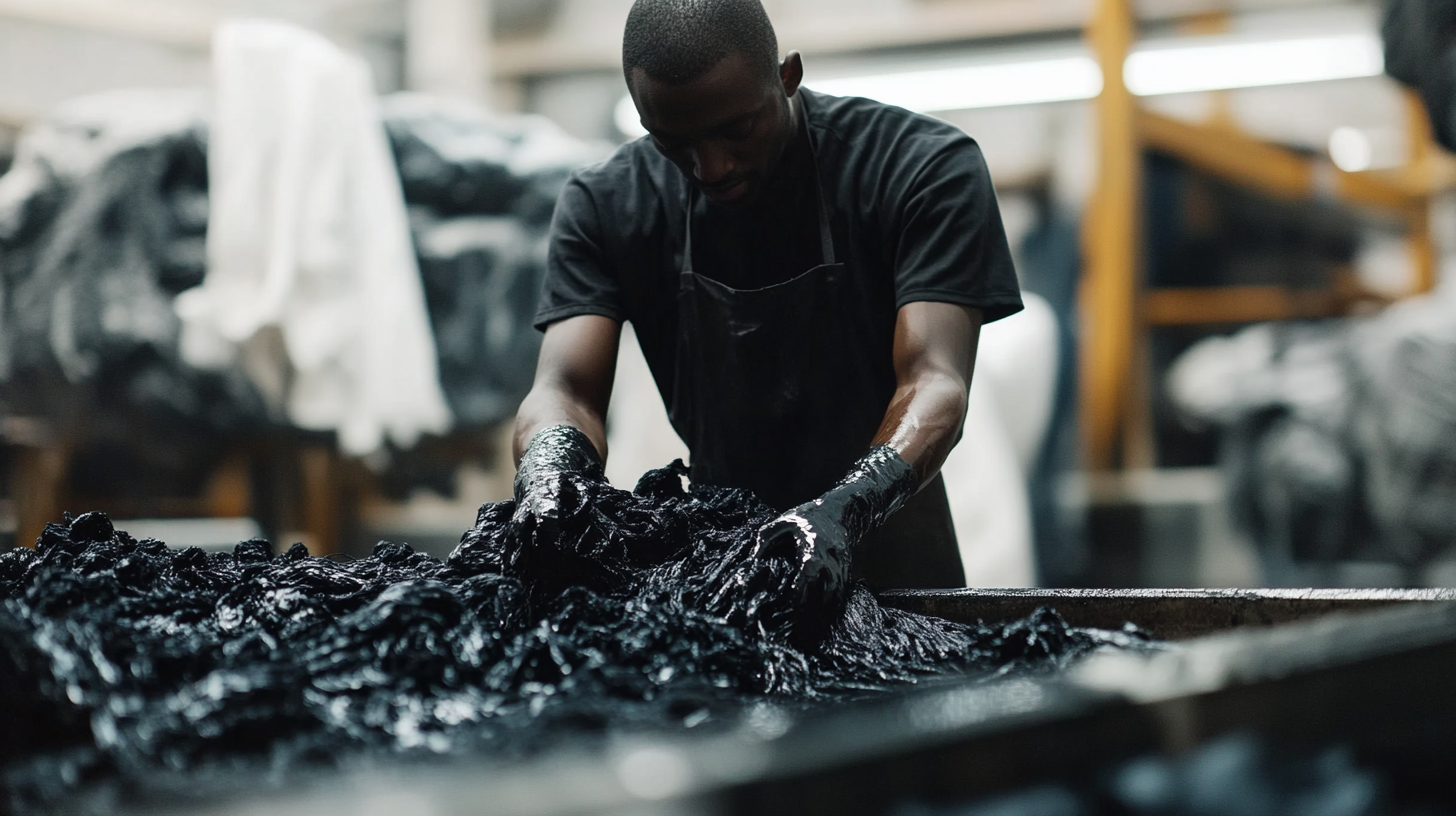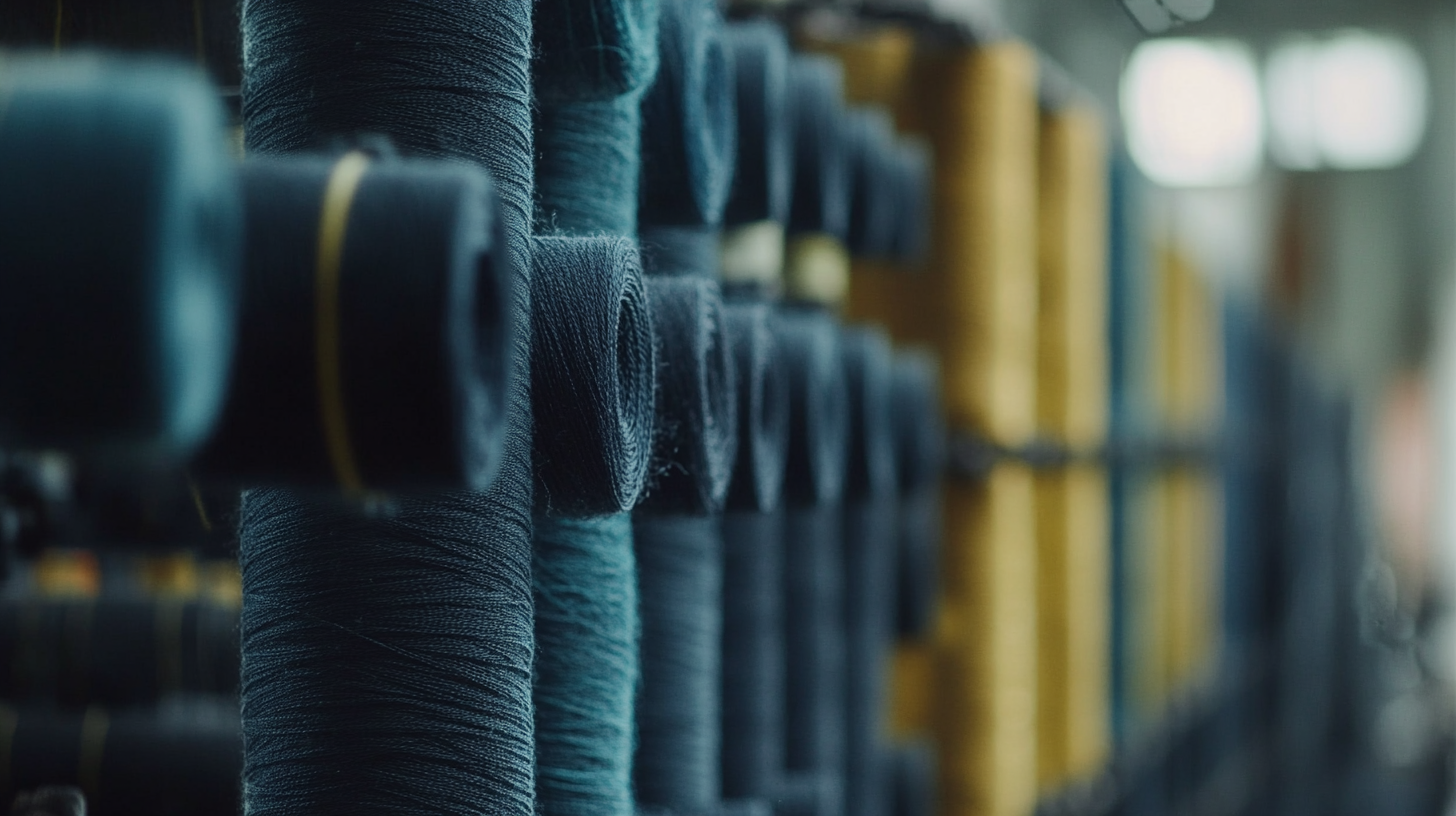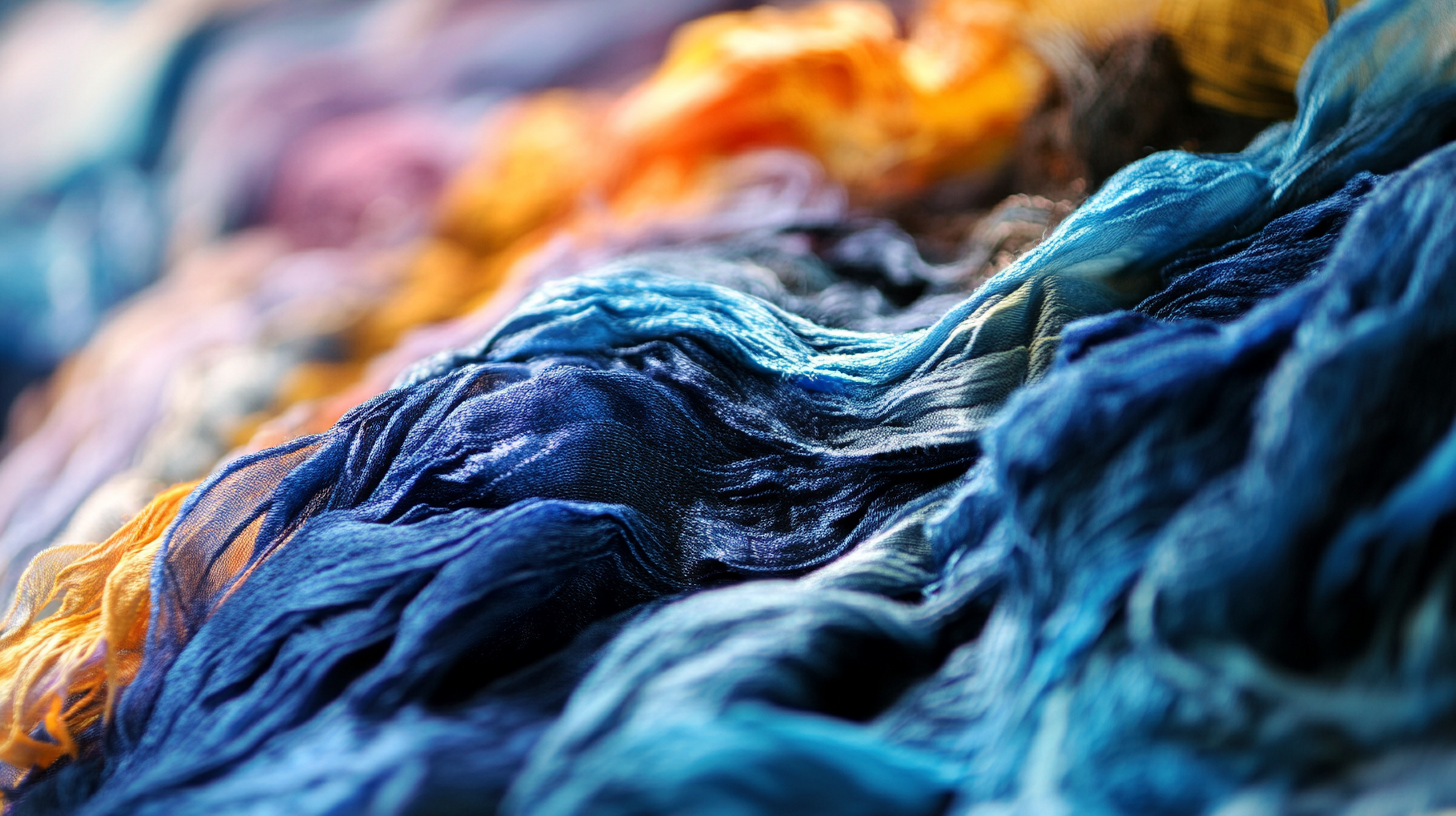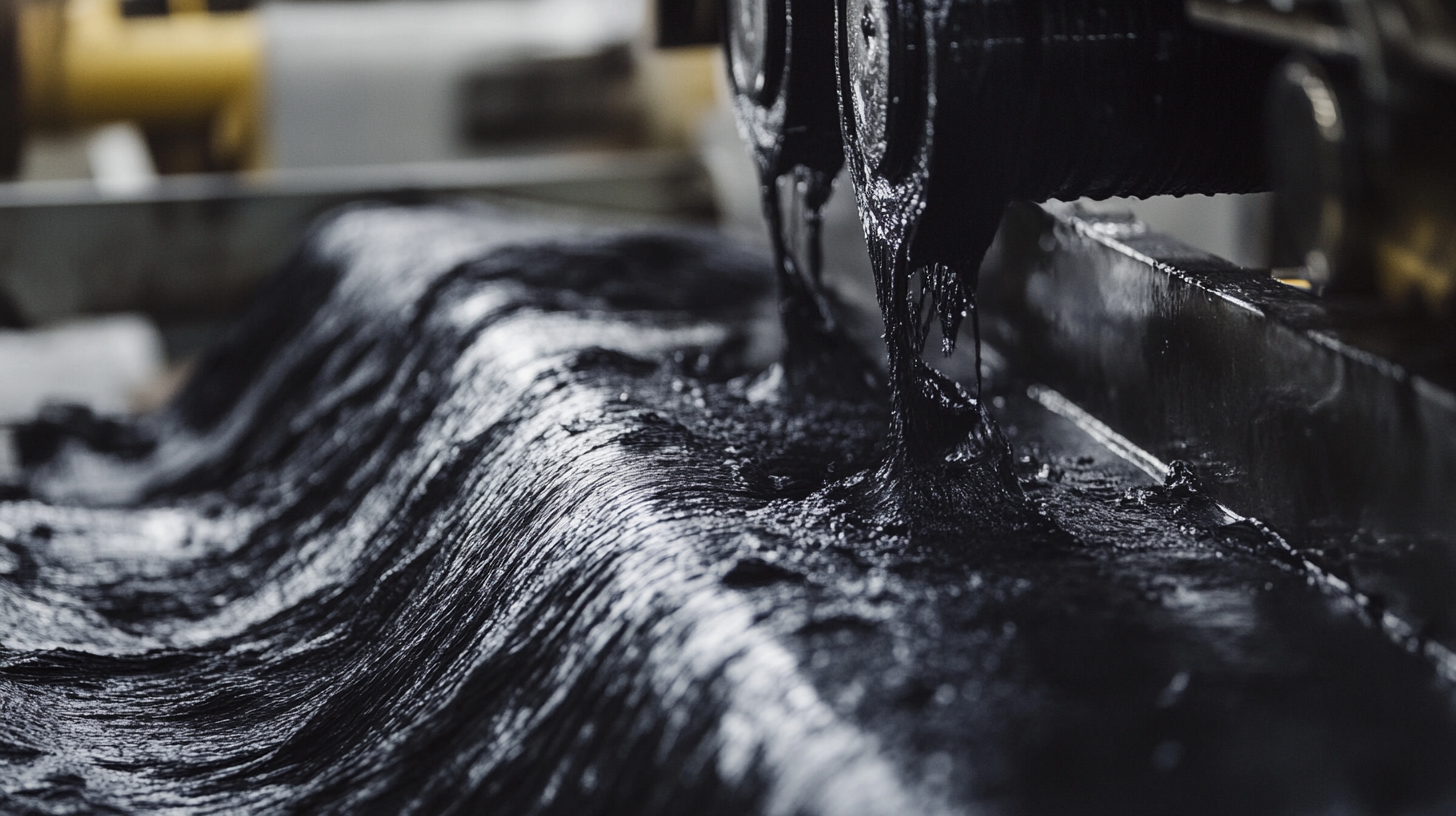The textile industry is one of the most water-intensive and polluting sectors globally, contributing significantly to environmental degradation. With over 2.5 trillion liters of water used annually in dyeing processes alone, sustainable solutions are urgently needed. Among the alternatives being explored, Sulphur Black Dye stands out as an eco-friendly option due to its low toxicity and minimal environmental impact. According to a report by the Global Fashion Agenda, switching to more sustainable dyeing methods could reduce water consumption in the textile sector by up to 30%, highlighting the importance of innovations in dye chemistry.
As brands explore sustainability, they are increasingly focusing on dyes that comply with stringent environmental regulations while offering vibrant color options. Sulphur Black Dye not only meets these criteria but is also known for its durability and fastness properties, making it an attractive choice for manufacturers. The market for sustainable dyes is projected to grow at a CAGR of approximately 7.7% from 2021 to 2028, driven by consumer demand for environmentally responsible fashion. By investing in Sustainable Textile Solutions like Sulphur Black Dye, the industry can make significant strides towards a greener future.

Sulphur black dye has a rich history that traces back to ancient civilizations, where it was valued not only for its deep, lustrous black hue but also for its durability and resistance to fading. Historically, this dye was derived from natural sources, and its use in textiles has played a significant role in various cultures. The significance of sulphur black dye lies not only in its aesthetic appeal but also in its applications on a wide range of fabrics, from everyday garments to ceremonial attire. This dye's resilience made it a preferred choice in the textile industry long before the advent of synthetic dyes. As the textile industry grapples with the environmental implications of dye production and wastewater management, the historical context of sulphur black dye can provide insights into sustainable practices. Many early synthetic dyes led to heavy metal pollution and other environmental challenges, compelling researchers to explore alternative solutions. Recent advancements in dye adsorption techniques, particularly those using graphene oxide, have shown promise in addressing the heavy metal content in textile wastewater. Such innovations highlight a pathway where the historical significance of traditional dyes can inform modern sustainable solutions, bridging the gap between the past and the present. Thus, revisiting the use of sulphur black dye not only sheds light on its historical importance but also offers valuable lessons for developing eco-friendly practices in the contemporary textile industry. By leveraging materials and techniques that honor traditional dyeing methods while addressing modern environmental concerns, the textile sector can move towards a more sustainable future.

The textile industry has long been criticized for its environmental repercussions, particularly due to the use of conventional dyes. Traditional dyeing methods often rely on toxic chemicals that not only contaminate water sources but also have adverse effects on human health and ecosystems. For instance, dyes such as Malachite Green and Reactive Black 5 are notorious for their toxicity and resistance to degradation. In many cases, the processes involved lead to significant air pollution and contribute to climate change, posing unprecedented challenges to sustainability in the industry.
In contrast, Sulphur Black dye offers a promising alternative for environmentally conscious textile solutions. Utilizing fewer toxic elements in its formulation, it presents a more sustainable approach without compromising color quality. Additionally, new eco-friendly practices such as microwave-assisted recycling of cellulosic fabrics dyed with reactive dyes demonstrate commitment to minimizing waste and improving fabric quality. Such innovations highlight the importance of adopting technologies that reduce chemical runoff while retaining the vibrant colors that consumers expect.
Moreover, research into the decolorization of dyes using microorganisms like Shewanella oneidensis suggests a viable route for remediating dye-laden effluents. Such biological methods not only enhance wastewater treatment but also pivot the industry toward a circular economy model. By embracing alternatives like Sulphur Black and bioremediation techniques, the textile sector has the potential to significantly lower its ecological footprint, paving the way for a more sustainable future.

Sulphur black dye has emerged as a potent tool in the realm of sustainable fashion, offering numerous benefits that align with the industry's increasing focus on eco-friendly practices. One of the primary advantages of this dye is its low environmental impact. According to a report by the Textile Exchange, the global textile industry is responsible for approximately 1.2 billion tons of greenhouse gas emissions annually, prompting the need for greener alternatives in dyeing processes. Sulphur black dye, derived from natural sources, emits considerably lower levels of volatile organic compounds (VOCs) compared to conventional dyes, significantly reducing the carbon footprint of textile production.
In addition to environmental benefits, sulphur black dye is known for its durability and colorfastness, which are crucial for sustainable fashion. The Color Association of the United States highlights that durable dyes contribute to extended garment life, decreasing the frequency of textile waste that ends up in landfills—a staggering 92 million tons annually, according to the Ellen MacArthur Foundation. Using robust dyes like sulphur black ensures that garments maintain their rich color and integrity over time, ultimately promoting a circular economy in fashion.
Furthermore, sulphur black dye facilitates cost savings for manufacturers. A report from the International Journal of Environmental Sciences estimates that eco-friendly dyeing processes can reduce water usage by up to 60%, an essential factor considering that the fashion industry is one of the largest consumers of freshwater resources. By adopting sulphur black dye, companies not only embrace sustainability but also optimize their resource consumption and reduce production costs, making it an economically viable choice for future-focused brands.

As the textile industry increasingly leans towards sustainability, innovative techniques for implementing sulphur black dye are paving the way for eco-friendly production methods. Traditionally, sulphur dyes are known for their excellent fastness properties and deep coloration. Recent research indicates that these dyes can significantly reduce water usage in dyeing processes compared to conventional dyes. According to a 2022 report by Textile Exchange, the use of sulphur dyes can decrease water consumption by up to 30%, addressing the urgent need for water conservation in textile manufacturing.
One of the innovative techniques being explored involves optimizing the dyeing process through the use of modern equipment and methodologies. For instance, the implementation of low-liquor ratio dyeing techniques allows for the use of less water and chemicals, increasing overall efficiency. Furthermore, advancements in digital dyeing technologies enable precise control over dyeing parameters, minimizing waste and ensuring consistent color quality. The shift towards automation and digitalization is shown to enhance the reproducibility of sulphur black dye applications, which represents a significant advancement in the industry.
Moreover, the introduction of bio-based additives in the dyeing process is gaining traction, enhancing the sustainability profile of sulphur black dyes. A report from the Sustainable Apparel Coalition indicated that these bio-based additives can reduce the environmental impact of dyeing processes by lowering energy consumption and improving the biodegradability of the resulting effluents. By integrating these innovations, the textile industry can harness the benefits of sulphur black dye while adhering to environmental regulations and increasingly pressing sustainability goals.
The textile industry is increasingly recognizing the urgent need for eco-friendly practices, and sulphur black dye is emerging as a promising solution in this pursuit. CleanKore's innovative dyeing process exemplifies this trend by producing sustainable black denim without harmful chemicals like potassium permanganate. This method not only meets consumer demand for stylish, sustainable products but also minimizes environmental impact, showcasing how traditional dyes can be adapted to fit modern eco-conscious standards.
The potential for sulphur black dye extends beyond denim. Recent research highlights the need for advanced techniques in dyeing processes, particularly with the growing awareness of the environmental hazards posed by synthetic dyes. Hybrid pigments and bioremediation strategies are now being explored to enhance color properties while ensuring less environmental toxicity. This progression signifies a paradigm shift in the textile industry—one that values sustainability without sacrificing quality or aesthetic appeal. As we move towards a future where sustainable solutions are paramount, sulphur black dye stands at the forefront of this transformative journey.
